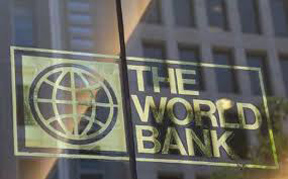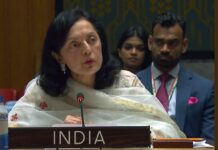 WASHINGTON: India was the world’s largest recipient of remittances from abroad in 2015 despite experiencing a USD 1 billion drop from the previous year, the first decline in its remittances since 2009, the World Bank said today.
WASHINGTON: India was the world’s largest recipient of remittances from abroad in 2015 despite experiencing a USD 1 billion drop from the previous year, the first decline in its remittances since 2009, the World Bank said today.
India retained its top spot in 2015, attracting about USD 69 billion in remittances, down from USD 70 billion in 2014, the World Bank said in its annual report ‘Migration and Development Brief’.
Other large remittance recipients in 2015 were China, with USD 64 billion, the Philippines (USD 28 billion), Mexico (USD 25 billion) and Nigeria (USD 21 billion).
“Remittances to India, the (South Asian) region’s largest economy and the world’s largest remittance recipient, decreased by 2.1 per cent in 2015, to USD 68.9 billion. This marks the first decline in remittances since 2009,” the World Bank report said.
Officially recorded remittances to developing countries amounted to USD 431.6 billion in 2015, an increase of 0.4 per cent over USD 430 billion in 2014. The growth pace in 2015 was the slowest since the global financial crisis, the report said.
Global remittances, which include those to high-income countries, contracted by 1.7 per cent to USD 581.6 billion in 2015, from USD 592 billion in 2014, the World Bank said.
“Remittances are an important and fairly stable source of income for millions of families and of foreign exchange to many developing countries,” said Augusto Lopez-Claros, Director of the World Bank’s Global Indicators Group.
“However, if remittances continue to slow, and dramatically as in the case of Central Asian countries, poor families in many parts of the world would face serious challenges including nutrition, access to health care and education,” Lopez-Claros said.
According to the report, the growth of remittances in 2015 slowed from eight per cent in 2014 to 2.5 per cent for Bangladesh, from 16.7 per cent to 12.8 per cent for Pakistan, and from 9.6 per cent to 0.5 per cent for Sri Lanka.
“Slower growth may reflect the impact of falling oil prices on remittances from GCC countries,” the report said.
For example, in the fourth quarter of 2015, year-on-year growth of remittances to Pakistan from Saudi Arabia and the UAE were 11.7 per cent and 11.6 per cent, respectively, a significant deceleration from 17.5 per cent and 42.0 per cent in the first quarter, the report explained.
Also, deprecation of major sending country currencies (for example, the euro, the Canadian dollar and Australian dollar) vis-a-vis the US dollar may be playing a role, it noted.
Remittances to Nepal rose dramatically in response to the earthquake, by 20.9 per cent in 2015 versus 3.2 per cent in 2014. Also, many migrant workers returned to take care of their families, as the average number of returns at the airport jumped five times to around 4,000 per day, it said.
The World Bank said remittances are extremely important to several countries in the region: remittances to Pakistan, Sri Lanka, Nepal and Bangladesh exceeded six per cent of GDP in 2014.
According to the report, the average cost of sending USD 200 to regional countries in the fourth quarter of 2015 was 5.4 per cent, down from 5.9 per cent recorded in the fourth quarter of 2014 and the lowest rate among developing regions.
“In India, following the approval of new payments banks, the Digital India and Start-up India initiatives have the potential to improve the environment for new start-ups and disruptive technologies to reduce remittance costs,” it said.
“However, regulations governing overseas transactions, including AMLCFT requirements and foreign exchange controls, may impede extending these services to international remittance transactions,” the report said.–PTI






